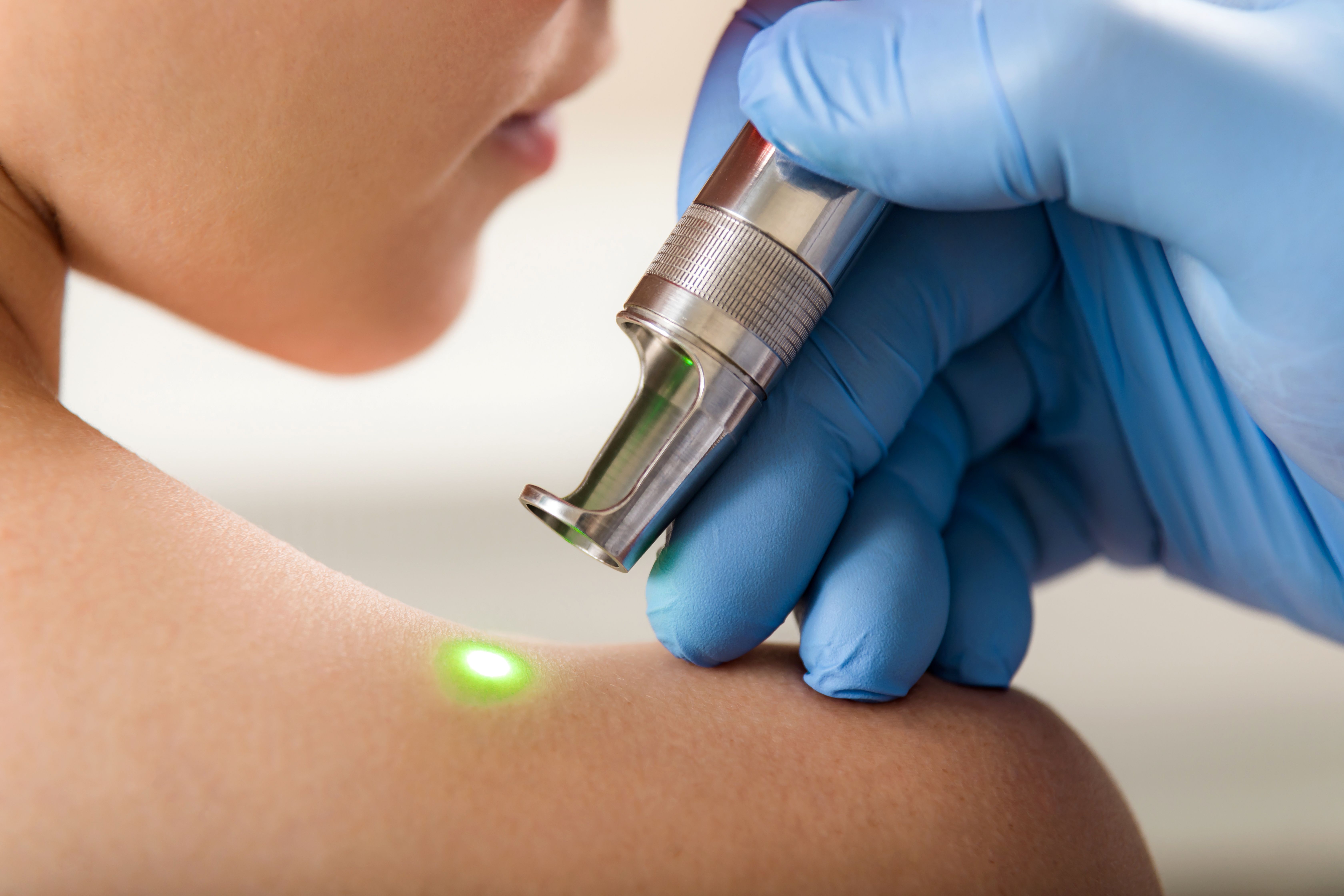- Case-Based Roundtable
- General Dermatology
- Eczema
- Chronic Hand Eczema
- Alopecia
- Aesthetics
- Vitiligo
- COVID-19
- Actinic Keratosis
- Precision Medicine and Biologics
- Rare Disease
- Wound Care
- Rosacea
- Psoriasis
- Psoriatic Arthritis
- Atopic Dermatitis
- Melasma
- NP and PA
- Skin Cancer
- Hidradenitis Suppurativa
- Drug Watch
- Pigmentary Disorders
- Acne
- Pediatric Dermatology
- Practice Management
- Prurigo Nodularis
- Buy-and-Bill
Article
Case study: 20 non-melanomas and now this mysterious lesion
In this case, the clinical diagnosis can be difficult as the features of the lesion overlap in this 90-year-old patient. What is the diagnosis?

Figures 1 and 2. Distant and close up images of lesion on arm of a 90-year-old female with a history of about 20 non-melanoma skin cancers.

Figures 1 and 2. Distant and close up images of lesion on arm of a 90-year-old female with a history of about 20 non-melanoma skin cancers.
ANSWER: These images are of an amelanotic melanoma (AMM). Clinical diagnosis can be difficult as the features overlap with that of other skin cancers. One can easily consider a basal cell carcinoma collision with a solar lentigo in the clinical differential diagnosis here. Early lesions may present as asymmetric skin-colored macules, with some showing uniform pink or red color (1,2). AMMs frequently have some identifiable pigment which can assist in diagnosis, as is seen in this case (1).

Figures 1 and 2. Distant and close up images of lesion on arm of a 90-year-old female with a history of about 20 non-melanoma skin cancers.

Figures 1 and 2. Distant and close up images of lesion on arm of a 90-year-old female with a history of about 20 non-melanoma skin cancers.
ANSWER: Due to the lack of pigment in amelanotic melanomas, they can be mistaken for all the above, and also eczema, keratoacanthoma, atypical fibroxanthoma, malignant fibrous histiocytoma, malignant schwannoma, or spindle cell squamous cell carcinoma (2,3). Amelanotic melanomas are unusual and therefore frequently diagnosed with a delay at an advanced stage, often when nodular, or ulcerated (2).

Figures 1 and 2. Distant and close up images of lesion on arm of a 90-year-old female with a history of about 20 non-melanoma skin cancers.

Figures 1 and 2. Distant and close up images of lesion on arm of a 90-year-old female with a history of about 20 non-melanoma skin cancers.
ANSWER: Red amelanotic melanomas account for approximately 70% of all amelanotic melanomas (2).

Figures 1 and 2. Distant and close up images of lesion on arm of a 90-year-old female with a history of about 20 non-melanoma skin cancers.

Figures 1 and 2. Distant and close up images of lesion on arm of a 90-year-old female with a history of about 20 non-melanoma skin cancers.
ANSWER: Biopsy should be done for confirmation of diagnosis. After accurate diagnosis as amelanotic malignant melanoma, wide local excision should be done. Sentinel lymph node mapping is a consideration if lesions are >1mm invasive. Advanced stages of melanoma benefit from recent advances in targeted chemotherapy as adjuncts after surgery (3).
REFERENCES
(1) Bono A, Maurichi A, Moglia D, et al. "Clinical and dermatoscopic diagnosis of early amelanotic melanoma." Melanoma Res. 2001 Oct;11(5):491-4.
(2) McClain SE, Mayo KB, Shada AL, et al. Amelanotic Melanomas Presenting as Red Skin Lesions: A Diagnostic Challenge with Potentially Lethal Consequences Int J Dermatol. 2012 Apr; 51(4): 420–426.
(3) Sun T, Hsu Y, Chien S, et al. Clinical Assessment of Amelanotic Melanoma: A Retrospective Study in Eastern Taiwan. Tzu Chi Med J. 2003; 15(1): 13-19.
Newsletter
Like what you’re reading? Subscribe to Dermatology Times for weekly updates on therapies, innovations, and real-world practice tips.






